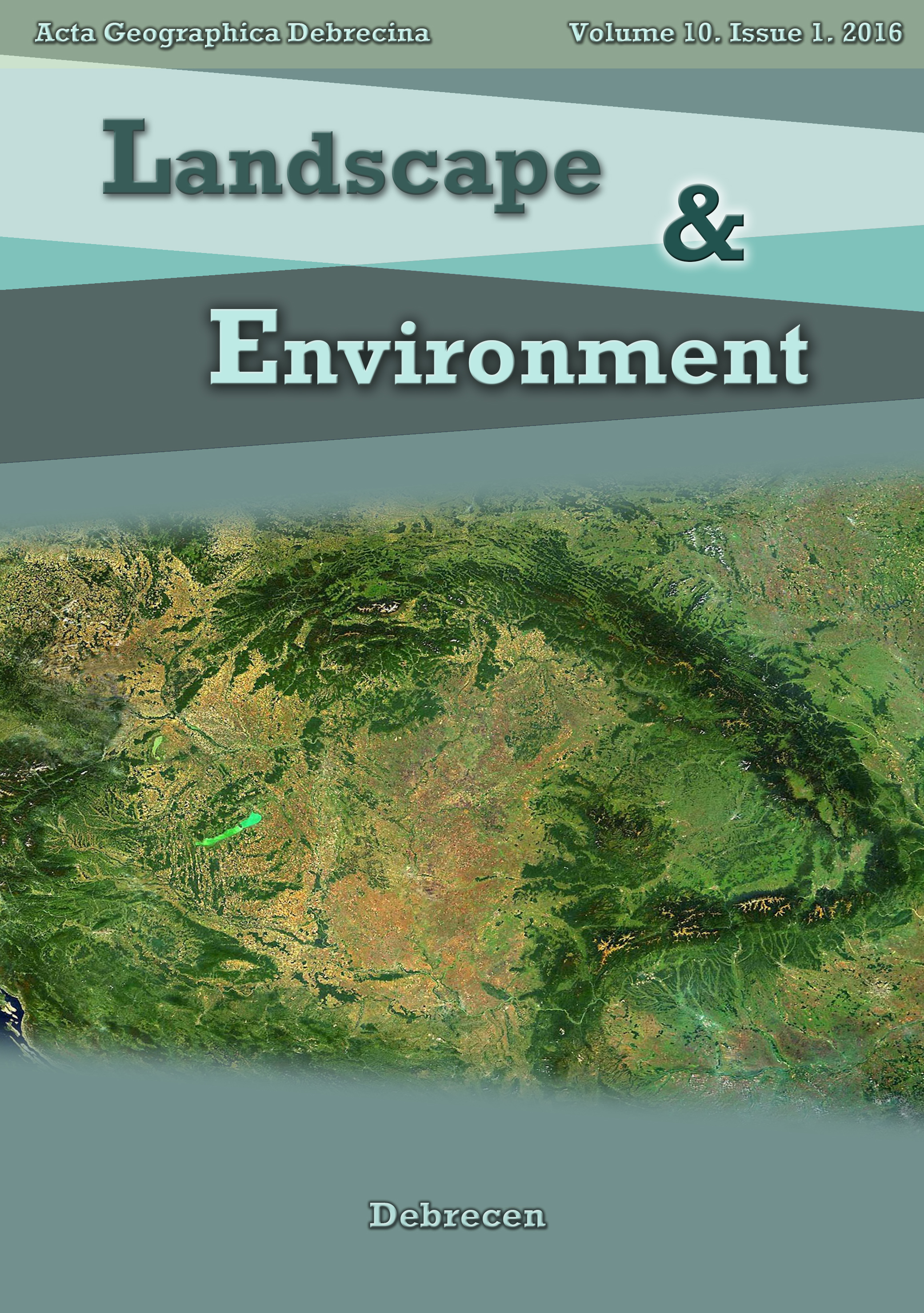Vol. 10 No. 1 (2016)
Balla D. – Varga Gy. O. – Zichar M. Accuracy assessment of different soil databases concerning WRB reference soil groups
Joshi, V. – Susware, N. – Sinha, D. Estimating soil loss from a watershed in Western Deccan, India, using Revised Universal Soil Loss Equation
Boromisza Zs. – Illyés Zs. – Gergely A. – Mészáros Sz. – Monspert-Molnár Zs. Evaluation of the possibilities for stream restoration: preassessment of the Váli-stream (Hungary)
Molnár É. V. Elemental concentration in deposited dust on urban tree leaves depending applied washing method
##issue.tableOfContents##
Articles
-
Accuracy assessment of different soil databases concerning WRB reference soil groups
1-12Views:309As a result of international cooperation, the conditions of data access and data usage have been significantly improved during the last two decades. Also, the establishment of web-based geoinformatic infrastructure allowed researchers to share their results with the scientific community more efficiently on the international level. The aim of this study is to investigate the accuracy of databases with different spatial resolutions, using the reference profiles of LUCAS topsoil database. In our study, we investigated the accuracy of World Reference Base for Soil Resources (WRB) Reference Soil Groups (RSG) groups stored in freely accessible soil databases (European Soil Database (ESDB), International Soil Reference and Information Centre (ISRIC)) in Hungary. The study concluded that the continental scale database tends to be more accurate. We used the Kappa Index of Agreement (KIA) statistical index to evaluate accuracy. The European and the international databases showed a value of 0.9643 and 0.3968, respectively. Considering the results, we can conclude that the spatial resolution has a relevant impact on the accuracy of databases, however, the study should be extended to the national level and the indices should be assessed together.
pdf158 -
Estimating soil loss from a watershed in Western Deccan, India, using Revised Universal Soil Loss Equation
13-25Views:619USLE (Universal Soil Loss Equation) is the original and the most widely accepted soil loss estimation technique till date which has evolved from a design tool for conservation planning to a research methodology all across the globe. The equation has been revised and modified over the years and became a foundation for several new soil loss models developed all around the world. The equation has been revised as RUSLE by Renard et al. (1991) and is computed in GIS environment. The Revised equation is landuse independent which makes it a useful technique to apply in a variety of environment. The present paper is an attempt to estimate soil loss from a semi-arid watershed in Western Deccan, India by employing RUSLE. The region is a rocky terrain and sediments are restricted to only a few localities. The result indicates that the region is at the threshold of soil tolerance limit.
pdf211 -
Evaluation of the possibilities for stream restoration: preassessment of the Váli-stream (Hungary)
26-44Views:329The purpose of this study is to evaluate the potential of restoration of a stream section. The starting point of the multiple-step assessment process was a historical analysis, which resulted in the definition of different sections within the study area, providing a base for the further restoration goals. The assessment of the current conditions was elaborated particularly to determine those factors, which could limit restoration. These assessments cover the land use pattern, furthermore the analysis of vegetation and habitat patches. As a result of the historical analysis, it has been found that the stream side habitat patches have decreased significantly despite the constant space available. This change was not caused by the increased area of the settlement, but rather by the higher dominancy of arable forms of land use. The greatest share of wet and mesic meadows and agricultural habitats in the study areas, covering 57.5% of the total area, indicates significant anthropogenic effects. Consequently it can be stated that the reference conditions are not the only determining factors of the restoration possibilities. Restoration style and intensity have been defined on basis of all assessed factors.
pdf105 -
Elemental concentration in deposited dust on urban tree leaves depending applied washing method
45-52Views:319In our study, the concentrations of elements were determined in leaves and deposited dust of Quercus robur and Celtis occidentalis which were washed with distilled water, rainwater and tap water. According to our results, each washing solutions had a significant effect on the elemental concentrations in the foliage dust. The highest concentrations of aluminum, chromium, copper, iron, manganese and zinc were detected in the foliage dust which was washed down with rainwater. The highest strontium and barium concentrations were found in the foliage dust which was washed down with tap water. We observed chromium and manganese accumulation in Q. robur leaves, while the concentrations of barium, copper and strontium were the highest in C. occidentalis leaves. Our results demonstrated the effect of rainwater on tree leaves which phenomenon occurs naturally. Rainwater may wash down the dry deposited foliage dust from the leaf surface, but it also delivers a certain concentration of elements through wet deposition.
pdf107
